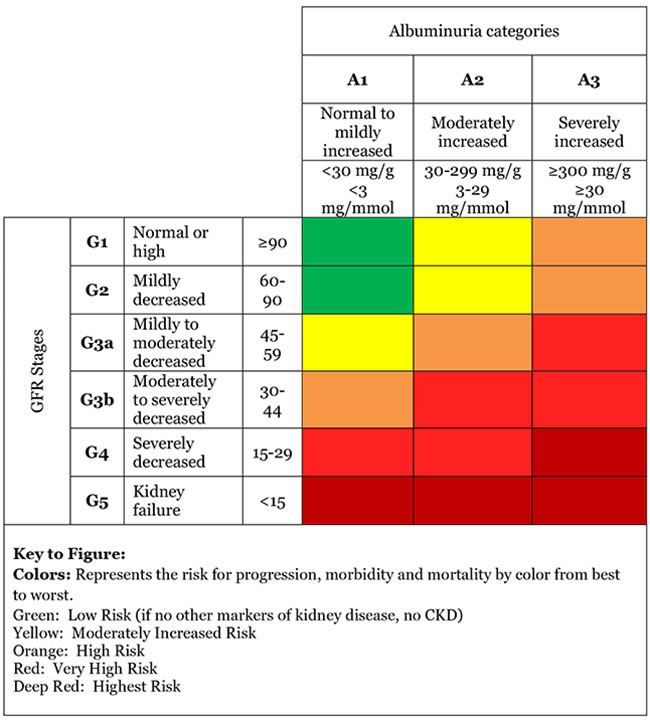What is Kidney Failure?
Kidney failure is a complex and potentially life-threatening condition that affects millions of people worldwide, including Kenya. It is a condition in which one or both of your kidneys no longer function well.
This leads to the deterioration of critical functions of the renal system in maintaining stable body systems (homeostasis). In this comprehensive guide, we will explore the different types, causes, prevention methods, and diagnosis techniques for kidney failure, focusing on Kenya and regional realities
Definition of Kidney Failure
Kidney failure, also known as end-stage renal disease (ESRD), is defined by the National Kidney Foundation (NKF) as a state where the kidneys do not function properly or sufficiently, resulting in the accumulation of waste products and toxic materials
What are the signs and symptoms of Renal Failure
🩺Reduced urine output
🩺Swelling in legs, ankles, and feet
🩺Shortness of breath
🩺Fatigue
🩺Nausea and vomiting
🩺Confusion
🩺Changes in urination frequency
🩺Blood in urine
🩺Foamy urine
🩺Itching
🩺Restless legs
🩺Breathlessness
🩺Chest pain or pressure
🩺Seizures
🩺Coma
Types of Kidney Failure
Kidney failure can be broadly classified into ways:-
A) Duration -acute kidney failure and chronic kidney failure.
B) Site of injury or disease – Pre-renal, Intra-renal and Post-renal
Let’s look briefly into each type
Acute Kidney Failure
Acute kidney failure, also known as acute renal failure (ARF), is a sudden and severe loss of kidney function, often occurring within hours or days. It can result from various causes, including:
1. Low Blood Flow to the Kidneys:
Insufficient blood flow to the kidneys can cause acute kidney failure. This can be due to heart attack, heart disease, liver scarring, dehydration, severe burns, allergic reactions, or severe infections(septic shock – especially in neonates
2. Inflammation:
Inflammation in the kidneys can lead to acute kidney failure. This can be caused by infections, trauma, or autoimmune disorders
3. Urinary Tract Obstruction
Kidney stones, blood clots, or other blockages in the urinary tract can cause acute kidney failure
4. Medications
Certain medications, such as nonsteroidal anti-inflammatory drugs (NSAIDs), antibiotics, diuretics, and ACE inhibitors, can cause acute kidney failure[1][2].
Chronic Kidney Failure
Chronic kidney failure, also known as chronic renal failure or chronic renal disease, is a gradual loss of kidney function over time. It is often caused by:
1. High Blood Pressure
Uncontrolled high blood pressure can damage the kidneys and lead to chronic kidney failure[1][2]
2. Diabetes
Uncontrolled diabetes can cause kidney damage (diabetic nephropathy), which leads to chronic kidney failure.
3. Kidney Infections
Recurring kidney infections can lead to irreversible damage to the kidneys. This includes pyelonephritis (a type of urinary tract infection involving the kidneys.
4. Genetic Conditions
Certain genetic conditions, such as polycystic kidney disease, can increase the risk of kidney failure
5. Trauma
Direct trauma to the kidneys, such as physical impact or accidents, can lead to kidney failure
6. Medications
Certain medications, such as NSAIDs, antibiotics, diuretics, and ACE inhibitors, can cause kidney failure
7. Lifestyle Factors
Heavy metal poisoning, vasculitis, lupus, glomerulonephritis, hemolytic uremic syndrome, multiple myeloma, scleroderma, thrombotic thrombocytopenic purpura, chemotherapy drugs, and certain antibiotics can all contribute to kidney failure
7. Kidney cancer
Tumours of the kidney are rare but important cause of kidney failure. This is particularly true for bilateral tumours such as nephroblastoma. Patients with other tumours may also experience decreased renal function as part of the systemic effect of the tumour or its treatment( chemotherapy and radiation)
Acute On Chronic Kidney Failure
Acute kidney injuries can be present on top of chronic kidney disease, a condition called acute-on-chronic kidney failure (AoCRF). The acute part of AoCRF may be reversible, and the goal of treatment, as with AKI, is to return the person to baseline kidney function, typically measured by serum creatinine[2].
Prevention of Kidney Failure
Preventing kidney failure involves managing underlying conditions and adopting healthy lifestyle habits. Key prevention strategies include:
🛡Managing Blood Pressure: Maintaining healthy blood pressure through diet, exercise, and medication can help prevent kidney failure[1][2].
🛡Managing Diabetes: Effective management of diabetes through diet, exercise, and medication can prevent kidney damage and failure[1][2].
🛡Limiting Medications: Avoiding or limiting the use of certain medications, such as NSAIDs, can help prevent kidney failure[1][2].
🛡Healthy Diet: Eating a balanced diet rich in fruits, vegetables, and whole grains can help maintain kidney health[1][2].
🛡Regular Exercise: Engaging in regular physical activity can help maintain kidney function[1][2].
🛡Avoiding Smoking: Quitting smoking can help prevent kidney damage and failure[1][2].
🛡Limiting Alcohol: Reducing or eliminating alcohol consumption can help prevent kidney failure[1][2].
Read more: 7 Highly Effective Ways To Safeguard Your Kidney Health
Diagnosis of Kidney Failure
Diagnosing kidney failure involves a combination of physical examination, medical history, and laboratory tests. The following are common diagnostic tests used to diagnose kidney failure:
Urine Analysis [Urinalysis]
Urinalysis is a crucial diagnostic tool for kidney failure. It involves analyzing a urine sample to detect abnormalities that may indicate kidney damage or disease. The following components are typically examined in a urinalysis:
🧪Protein: Elevated protein levels in the urine can indicate kidney damage or disease.
🧪Microalbumin: A small amount of albumin protein may be seen in urine before overt proteinuria.
🧪Sugar: The presence of sugar in the urine can suggest diabetes, which is a common cause of kidney failure.
🧪Blood: Blood in the urine can indicate kidney damage or disease.
🧪Bacteria: High levels of bacteria in the urine can indicate a urinary tract infection, which can contribute to kidney failure.
🧪Cellular casts: The presence of cellular casts in the urine can indicate kidney damage or disease.
Urine Albumin Creatinine Ratio (UACR)
UACR is a test that compares the amount of albumin and creatinine in a urine sample. Albumin is a protein that is normally found in the blood, but it should not be present in the urine if the kidneys are functioning properly. Creatinine is a waste product that comes from the digestion of protein in the body and is removed from the body through the kidneys. The UACR is used to detect kidney damage and monitor kidney function.
According to the American Diabetes Association, the following cutoffs are used to interpret UACR:
- Less than 30 mg/g: Normal
- 30 to 299 mg/g: Microalbuminuria (moderately increased albumin)
- 300 mg/g or more: Macroalbuminuria (severely increased albumin)
In pregnancy, a urine ACR of 8 mg/mmol or above may indicate pre-eclampsia, but the result should be interpreted in the context of a full clinical review
Urine Volume Measurements
Measuring urine output is essential in diagnosing kidney failure. Low urine output may suggest that kidney disease is due to a urinary blockage. This test helps to determine the severity of kidney failure and monitor the effectiveness of treatment.
Kidney Function Tests: Urea, Electrolytes, Creatinine [UECs]
The UECs form the cornerstone of the diagnosis of kidney failure. These tests objectively demonstrate the reduced capacity of the kidneys to excrete waste products from the body.
Blood tests are used to measure substances filtered by the kidneys, such as:
- Blood urea nitrogen (BUN)/ Urea: Elevated BUN levels indicate that the kidneys are not effectively removing waste products from the blood.
- Creatinine: Elevated creatinine levels indicate that the kidneys are not effectively removing waste products from the blood. A rapid rise in creatinine levels may indicate acute kidney failure.
- Electrolytes: These include Sodium, Potassium, chloride, Calcium and phosphate. When consistently elevated, these points towards decompensated kidney failure.
Estimated Glomerular Filtration Rate (eGFR)
The eGFR is a measurement used to assess the severity or stage of chronic renal failure. It allows for monitoring treatment and guide management decisions including dialysis and transplantation.
The estimated glomerular filtration rate (eGFR) is calculated using a formula that considers the level of creatinine in the blood, along with age and sex. The most commonly used formula is the Chronic Kidney Disease Epidemiology Collaboration (CKD-EPI) equation, which is based on the results of a serum creatinine blood test and other factors such as age and gender.
💡 Our Laboratory provides a free calculation for eGFR for kidney function tests [UECs]
| Stage | eGFR Level | Description |
|---|---|---|
| Stage 1 | ≥ 90 mL/min/1.73m2 | Other evidence of kidney damage |
| Stage 2 | 60-89 mL/min/1.73m2 | with other evidence of kidney damage |
| Stage 3a | 45-59 mL/min/1.73m2 | |
| Stage 3b | 30-44 mL/min/1.73m2 | |
| Stage 4 | 15-29 mL/min/1.73m2 | |
| Stage 5 | eGFR < 15 mL/min/1.73m2 | End Stage Renal Disease (ESRD) |
Risk of Renal Failure by UACR and eGFR

Imaging Tests for Renal Disease
Imaging tests provide images of the kidneys and urinary tract to identify issues such as blockages, tumors, or structural abnormalities. Common imaging tests include:
- Ultrasound: Uses high-frequency sound waves to produce images of the kidneys and urinary tract.
- Magnetic Resonance Imaging (MRI): Uses a strong magnetic field and radio waves to produce detailed images of the kidneys and urinary tract.
- Computed Tomography (CT) Scan: Uses X-rays and computer technology to produce detailed images of the kidneys and urinary tract.
Kidney Tissue Sample (Biopsy)
A kidney biopsy involves collecting and examining tissue samples from the kidneys. This test helps to diagnose kidney disease and determine the extent of kidney damage. The biopsy procedure typically involves inserting a needle through the skin and into the kidney to collect tissue samples.
Conclusion – Renal Failure: A significant but manageable health challenge in Kenya.
Understanding the different types of kidney failure, including acute and chronic kidney failure, and their various causes and classifications is crucial for effective diagnosis and treatment. By recognizing the signs and symptoms of kidney failure and adopting healthy lifestyle habits, individuals can reduce their risk of developing kidney failure.
Relevant Tests mentioned in this article
Disclaimer
The information provided on this medical blog is for general informational purposes only and should not be considered as a substitute for professional medical advice. Always consult with a qualified healthcare provider before making any healthcare decisions or taking any actions based on the information provided on this blog. The authors and publishers of this blog are not liable for any errors or omissions in the content or for any actions taken based on the information provided.
